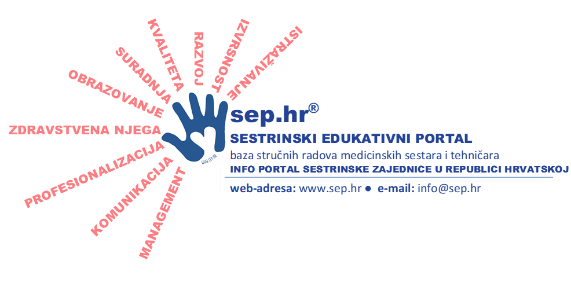Autori: Bernarda Djekic
Ustanova zaposlenja: SLOVENIA
Ključne riječi: rhythm disorder, pacing, temporary pacing, nursing care
Kongres/Simpozij: ”5. Međunarodni kongres HDMSARIST-a” i ”8. Međunarodni kongres WFCCN-a”
Mjesto i vrijeme održavanja: Šibenik, 12.-15. travnja 2012. godine
Background: Currently, many types of heart rhythm disorders are known, which can be more or less dangerous to the patients. If not treated properly, those rhythms could cause severe hemodynamic disorders or even life threatening situation for the patient.
AIM: The purpose to do the review is to present the reasons and indications for temporary pacemaker implantation from theoretical point of view, describe different types of electrical stimulation of the heart, new methods and functions of implantable pacemakers and highlight the importance of nursing care and hemodynamic monitoring of patients with rhythm disorder.
Method: The descriptive method was used along with review of the available professional and scientific literature.
Implication for practice: Temporary pacemakers as one of the many types of electrical stimulations of the heart are used more frequently in intensive care units as well as in emergency medicine. This type of heart stimulation allows us to save the lives of many patients, particularly those with bradycardic heart rhythm, which may impair the hemodynamics and, if not treated properly, may lead to life threatening rhythm disorders. Knowledge of different theories and theoretical models of nursing care is prerequisite for individual, systematic and holistic approach to patient. Based on the life activities according to Virginia Henderson teoretical model nursing care after the insertion temporary pacemaker is described in this article. Most common standard nursing diagnoses are carried out. Therefore, education of nurses is of essential importance in allowing them to help the patients and provide high-quality nursing care. Only knowledge and experience enables us to be professional in our work and gain the patient’s trust, which is the key of importance for a successful outcome of treatment and quality care.
